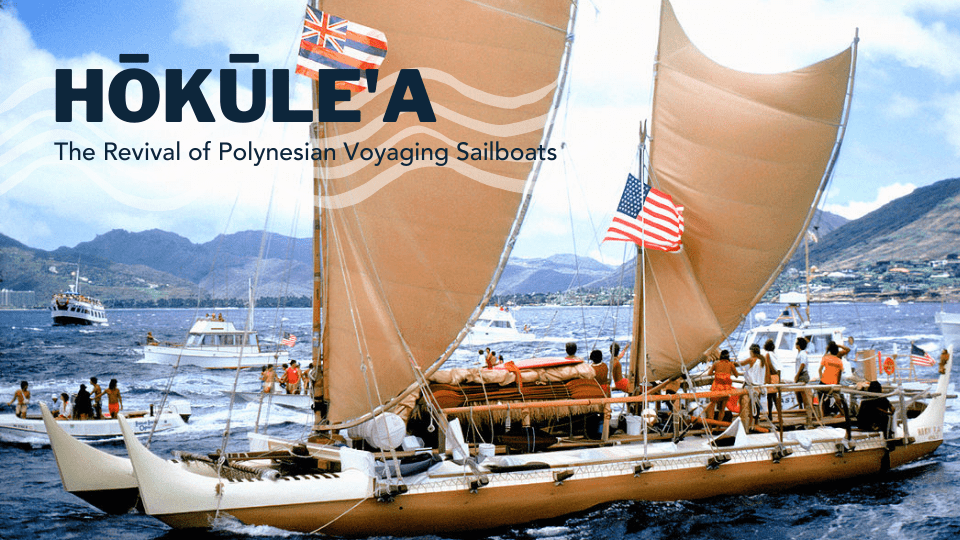On the last day of Asian American & Pacific Islander Heritage month, we are highlighting the Hōkūle’a – a modern recreation of an ancient Polynesian voyaging canoe built in the 1970s to revive the tradition of Polynesian voyaging.
In 1975, Hawaiian artist and historian Herb Kawainui Kāne set out to challenge the notion that his ancient Polynesian ancestors had discovered and settled the Pacific islands by accident. He intended to design and construct a replica of a wa‘a kaulua, or double-hulled voyaging canoe, and sail it from Hawaii to Tahiti using only traditional navigational tools. Thus Hōkūle‘a was born.
Hōkūle‘a, “Star of Gladness,” is named for Arcturus, the zenith star of Hawaii. Construction was undertaken by the Polynesian Voyaging Society between 1973-1975. Since no physical record of the original sailing canoes remained, the design of Hōkūle‘a was based upon drawings made by the crew of Captain Cook and other early European explorers of the Pacific and used modern building materials such as plywood and fiberglass. Kāne’s goal was to construct a performance-accurate model that would approximate the handling of an ancient voyaging canoe as closely as possible. The finished vessel measured 62’ in length by 20’ in width.
Hōkūle‘a sailed for Tahiti from Hakipu‘u-Kualoa, Oahu on March 8, 1975. She was met at Pape’ete harbor by a contingent of over 17,000 Tahitians, more than half the island’s population. A second Tahitian voyage took place in 1978, but the canoe capsized off the coast of Moloka’i in heavy seas. Crew member Eddie Aikau left on a surfboard to get help. The crew was rescued but Aikau was lost at sea. Despite this tragedy, the crew of Hōkūle‘a continued to make voyages in his honor.
The traditional navigator Mau Piailug of Micronesia, who had made the maiden voyage of Hōkūle‘a possible, returned to Hawaii in 1979 to train Nainoa Thompson to navigate Hōkūle‘a. Thompson succeeded in a round-trip voyage from Hawaii to Tahiti in 1980, a feat unmatched since the original canoe voyages some 600 years prior. Hōkūle‘a continued to sail the Pacific in the following decades, eventually reaching Aotearoa (New Zealand) and Rapa Nui (Easter Island), which form the three points of the traditional Polynesian Triangle with Hawaii.
The voyages of Hōkūle‘a have marked the renewal of awareness and appreciation for the indigenous people of Hawaii and their seafaring heritage. This newfound cultural pride is reflected in the mission of the Polynesian Voyaging Society “to perpetuate the art and science of traditional Polynesian voyaging and the spirit of exploration” and to “inspire communities to respect and care for themselves, each other, and their natural and cultural environments.”
Hōkūle‘a is currently underway with her sister ship Hikianalia on another ocean crossing to Tahiti. The latest information can be found on their website: https://waahonua.com/voyage-dashboard/

